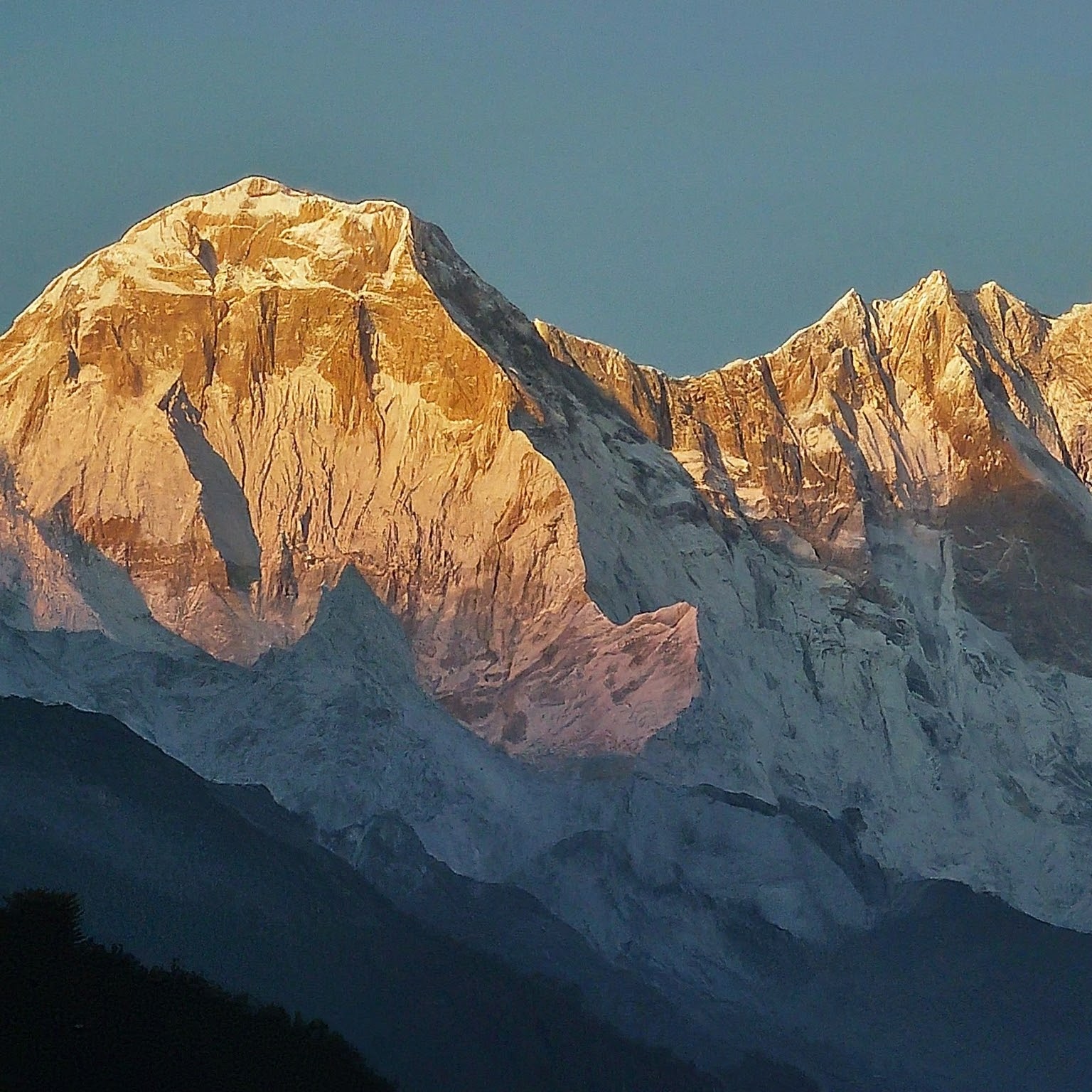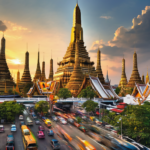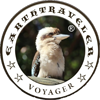“Nepal offers a mesmerizing blend of natural beauty, rich cultural heritage, and thrilling adventure opportunities.”
From the majestic peaks of the Himalayas to the bustling streets of Kathmandu, every corner of Nepal has something unique to offer. Whether you’re trekking to Everest Base Camp, exploring ancient temples in Kathmandu Valley, or immersing yourself in the tranquility of Pokhara’s lakes, Nepal promises an unforgettable travel experience.
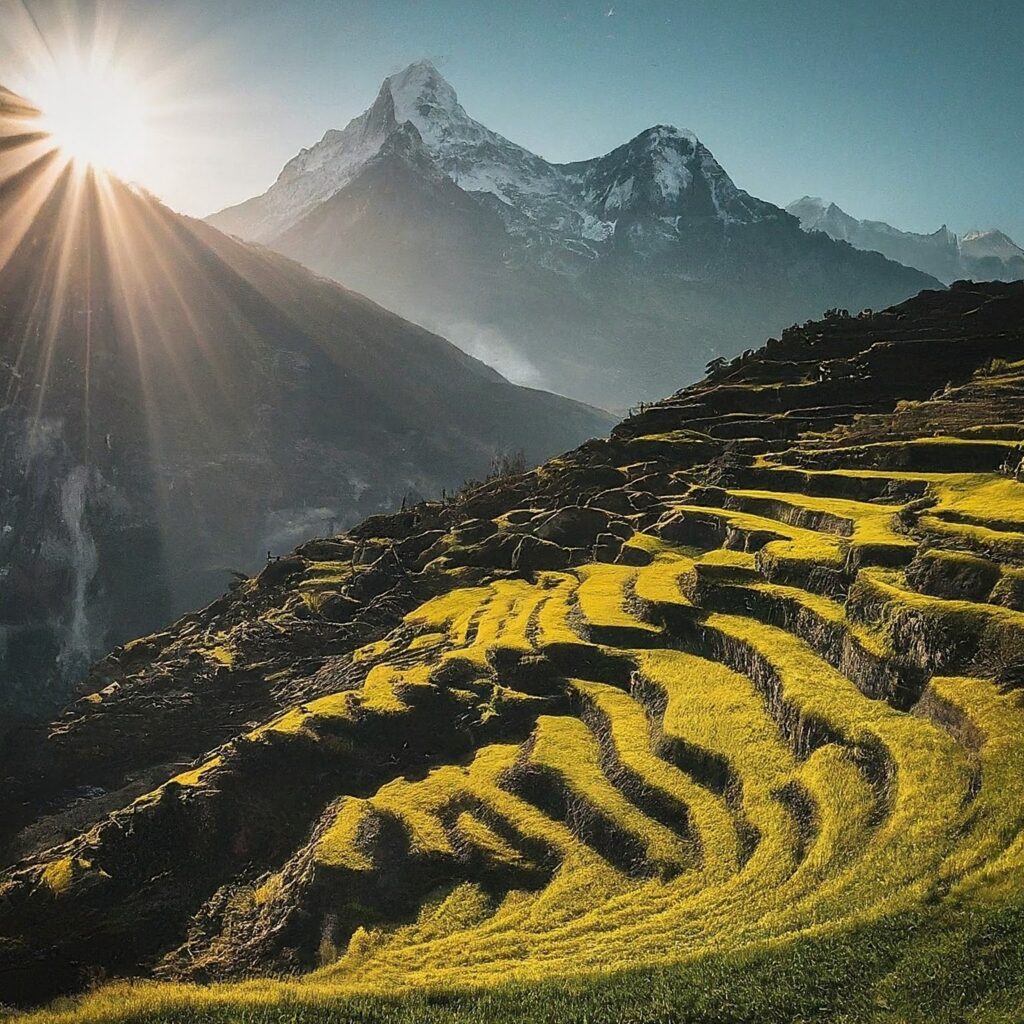
Main Attraction
Nepal boasts a rich tapestry of cultural, historical, and natural wonders that attract tourists from all over the world. Here are some of its main tourist attractions:
These are just a few highlights of what Nepal has to offer. The country’s diverse landscapes, rich cultural heritage, and warm hospitality ensure that there’s something for every type of traveler to experience and enjoy.
- Mount Everest: The world’s highest peak is a magnet for adventurers and climbers. Even if you’re not scaling its heights, the Everest Base Camp trek offers breathtaking views and a chance to experience the Himalayas up close.
- Kathmandu Valley: This UNESCO World Heritage Site is home to several ancient cities, including Kathmandu, Bhaktapur, and Patan. The valley is dotted with stunning temples, palaces, and monuments, showcasing Nepal’s rich cultural heritage.
- Pokhara: Known as the gateway to the Annapurna Circuit trek, Pokhara is a picturesque city nestled beside Phewa Lake. Visitors can enjoy boating, paragliding, and hiking, or simply soak in the stunning mountain views.
- Chitwan National Park: One of Nepal’s premier wildlife destinations, Chitwan is famous for its population of Bengal tigers, one-horned rhinoceroses, and a variety of bird species. Jungle safaris, elephant rides, and canoeing are popular activities here.
- Lumbini: Birthplace of Siddhartha Gautama, the historical Buddha, Lumbini is a pilgrimage site for Buddhists around the world. The sacred garden, Maya Devi Temple, and numerous monasteries make it a serene and spiritually significant place.
- Annapurna Circuit: Renowned as one of the most spectacular trekking routes in the world, the Annapurna Circuit offers stunning mountain vistas, diverse landscapes, and encounters with local culture in traditional mountain villages.
- Boudhanath Stupa: Located in Kathmandu, this massive stupa is one of the largest in the world and is a significant pilgrimage site for Buddhists. The area surrounding the stupa is bustling with monasteries, shops, and cafes.
- Swayambhunath (Monkey Temple): Another iconic site in Kathmandu, Swayambhunath is a sacred Buddhist complex perched atop a hill. Visitors can climb the stairs to reach the stupa and enjoy panoramic views of the city.
- Bhaktapur Durbar Square: This well-preserved ancient square in Bhaktapur is a treasure trove of Newari architecture, with intricately carved temples, palaces, and courtyards showcasing Nepal’s medieval art and craftsmanship.
- Langtang National Park: Close to Kathmandu, Langtang offers trekking opportunities amidst stunning alpine scenery, including snow-capped peaks, dense forests, and picturesque villages inhabited by Tamang and Sherpa communities.
Foods to Taste.
Nepalese cuisine is rich in flavors, influenced by its diverse geography and cultural heritage. Here are some must-try foods when visiting Nepal:
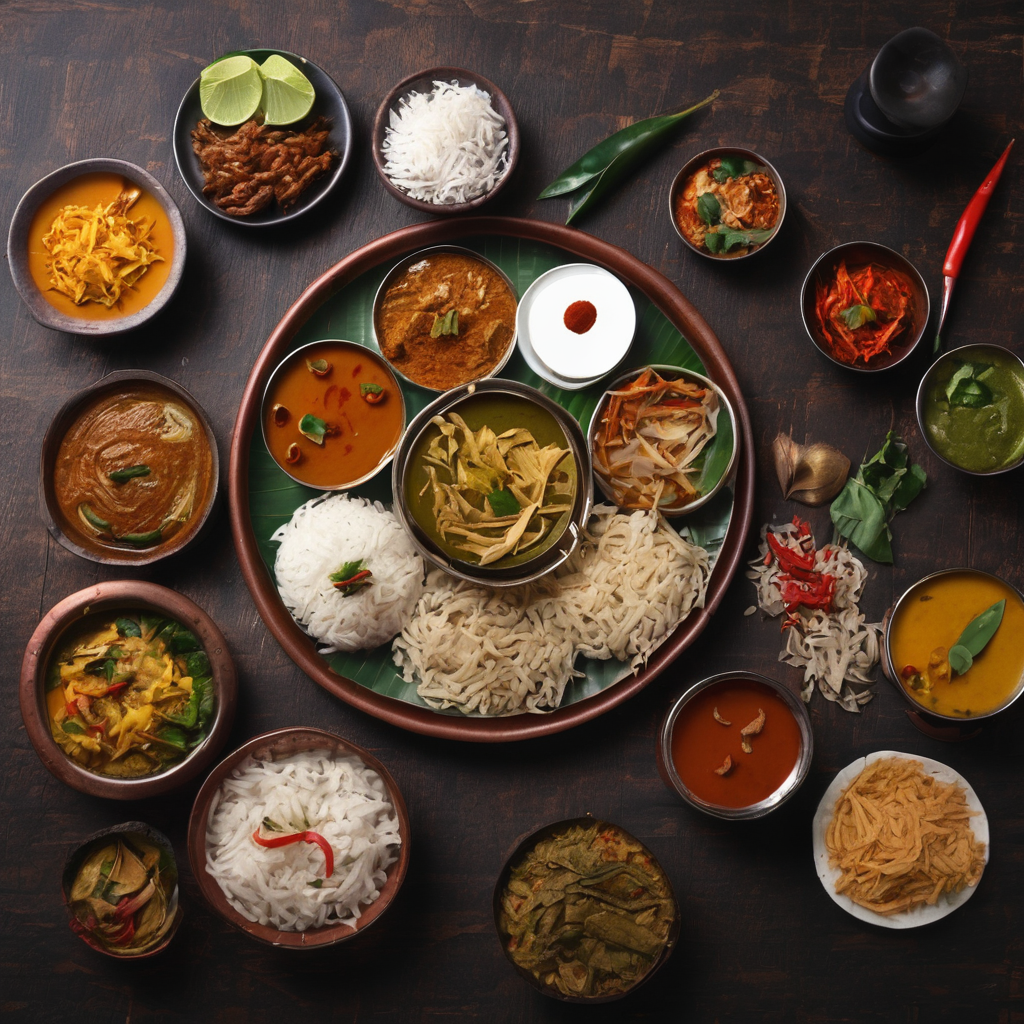
- Dal Bhat: Considered the national dish of Nepal, dal bhat consists of steamed rice (bhat) served with lentil soup (dal) and a variety of side dishes, such as vegetables, pickles, and sometimes meat or fish.
- Momos: These delicious dumplings are filled with meat (usually buffalo, chicken, or pork) or vegetables, seasoned with herbs and spices, and steamed or fried. Momos are typically served with a dipping sauce made from tomatoes or sesame seeds.
- Sel Roti: A traditional Nepali rice-based donut or bread, sel roti is made from rice flour, sugar, and milk, then deep-fried to crispy perfection. It’s often enjoyed as a snack or during festive occasions.
- Thukpa: A hearty noodle soup of Tibetan origin, thukpa is popular in Nepal, especially in the colder regions. It typically contains noodles, vegetables, and your choice of meat, all simmered in a flavorful broth.
- Gundruk: This fermented leafy green vegetable is a staple in Nepali cuisine. It’s made by fermenting mustard greens, spinach, or other leafy vegetables, then sun-drying them. Gundruk is often used to add flavor to soups, stews, and pickles.
- Chatamari: Sometimes referred to as “Nepali pizza,” chatamari is a thin rice flour pancake topped with minced meat, eggs, vegetables, and spices. It’s cooked on a griddle and served as a snack or appetizer.
- Yomari: A sweet dumpling filled with molasses and sesame seeds, yomari is a traditional Newari dessert enjoyed during the Yomari Punhi festival. It’s shaped like a fish or a conch shell and steamed to perfection.
- Sekuwa: Marinated and grilled meat skewers, usually made from buffalo, chicken, or goat, sekuwa is a popular street food in Nepal. The meat is marinated in a mixture of spices and then grilled over an open flame for a smoky flavor.
- Aloo Tama: This traditional Nepali curry combines potatoes (aloo) with fermented bamboo shoots (tama), creating a unique and tangy flavor. It’s often cooked with spices, tomatoes, and sometimes meat for added richness.
- Samay Baji: A traditional Newari dish, samay baji is a platter of various foods served during festivals and special occasions. It typically includes beaten rice (chiura), fried fish, buffalo meat, boiled eggs, and other condiments.
These are just a few examples of the diverse and flavorful cuisine you can enjoy in Nepal. Be sure to explore local markets, tea houses, and restaurants to discover even more delicious dishes during your visit.
Best time to visit.
The best time to visit Nepal depends on what activities you plan to do and which regions you want to explore. Generally, the two primary seasons for tourism in Nepal are the spring (March to May) and autumn (September to November).
- Spring (March to May):
- This season brings warmer temperatures and blooming flowers, making it ideal for trekking and mountaineering.
- The skies are generally clear, offering stunning views of the Himalayas.
- Spring is also a great time to experience Nepal’s cultural festivals, such as Holi and Buddha Jayanti.
- Autumn (September to November):
- Autumn is considered the best time to visit Nepal overall, as the weather is mild and stable.
- The skies are clear, providing excellent visibility for mountain views and trekking.
- Many festivals, including Dashain and Tihar, fall during this season, offering a chance to experience Nepali culture and traditions.
However, each season has its own advantages, and the best time to visit Nepal can vary depending on personal preferences and the activities you plan to pursue:
- Summer (June to August):
- Summer brings the monsoon season to Nepal, with heavy rainfall, especially in the southern regions.
- While trekking in the Himalayas can be challenging due to muddy trails and leeches, this season is ideal for exploring the lush greenery of the lowlands and enjoying cultural tours in Kathmandu and other cities.
- Winter (December to February):
- Winter in Nepal brings colder temperatures, especially in the higher elevations, along with occasional snowfall.
- Trekking at higher altitudes can be challenging due to cold weather and possible trail closures, but lower-altitude treks and cultural tours are still possible and less crowded.
- Winter is also a good time for birdwatching and wildlife safaris in places like Chitwan and Bardia National Parks.
Ultimately, the best time to visit Nepal depends on your interests and preferences. Whether you’re trekking in the Himalayas, exploring cultural sites, or enjoying outdoor adventures, Nepal offers something special in every season.

How to go ?
Getting to Nepal typically involves traveling by air, as it is a landlocked country located in the Himalayas. Here’s how you can go to Nepal:
- By Air:
- Tribhuvan International Airport (TIA) in Kathmandu is Nepal’s only international airport and serves as the primary gateway for travelers arriving by air.
- Many major airlines operate flights to Kathmandu from various cities around the world, including Delhi, Mumbai, Bangkok, Hong Kong, Doha, Dubai, Istanbul, Kuala Lumpur, and more.
- Depending on your location, you can book a direct flight to Kathmandu or connect through a nearby hub.
- Visa Requirements:
- Before traveling to Nepal, check the visa requirements for your nationality. Most visitors need a visa to enter Nepal, which can be obtained on arrival at TIA or from Nepali embassies and consulates abroad.
- Tourist visas are typically valid for multiple entries and allow stays of up to 15, 30, or 90 days, depending on the duration requested and the fees paid.
- Overland Travel:
- If you’re already in a neighboring country, such as India or China, you can also enter Nepal overland via designated border crossings.
- From India: Popular border crossings include Kakarbhitta, Birgunj, Bhairahawa, and Mahendranagar.
- From China: The Kodari and Rasuwagadhi border crossings are the main entry points from Tibet.
- Transportation within Nepal:
- Upon arrival in Kathmandu, you can use taxis, buses, or private vehicles to travel within the city and to other destinations in Nepal.
- Domestic flights are available to major cities and tourist hubs such as Pokhara, Bharatpur (near Chitwan National Park), Lukla (gateway to Everest region), and other destinations.
- Long-distance buses and microbuses connect Kathmandu with other cities and towns across Nepal, although travel times can be long due to road conditions.
- Travel Documents:
- Ensure you have your passport, visa (if required), and any other necessary travel documents ready before departure.
- It’s also a good idea to carry multiple copies of important documents and keep them in separate bags or with a trusted person in case of loss or theft.
Before traveling, it’s advisable to check the latest travel advisories, visa requirements, and entry restrictions, as they may change due to factors such as political developments, natural disasters, or health emergencies. Additionally, consider purchasing travel insurance to cover unexpected events during your trip.
Travel Tips:
Here are some travel tips to help you make the most of your visit to Nepal:
- Acclimatize Properly: If you’re planning on trekking or traveling to high-altitude areas like Everest Base Camp or Annapurna Circuit, it’s essential to acclimatize properly to avoid altitude sickness. Take your time ascending, drink plenty of water, and listen to your body.
- Pack Accordingly: Nepal has diverse landscapes and climates, so pack accordingly for the regions you plan to visit. Layers are key, as temperatures can vary widely between day and night. Don’t forget essentials like sunscreen, insect repellent, and a good pair of walking shoes.
- Respect Local Customs: Nepali culture is rich and diverse, with its own customs and traditions. Respect local customs, dress modestly (especially when visiting religious sites), and ask for permission before taking photos of people.
- Stay Hydrated: It’s essential to stay hydrated, especially when trekking or traveling in Nepal’s often dry and high-altitude environments. Carry a reusable water bottle and refill it with purified or filtered water to avoid plastic waste.
- Try Local Food: Nepalese cuisine offers a delicious array of flavors and dishes. Don’t miss the opportunity to try local specialties like momos, dal bhat, and sel roti. Be adventurous and sample street food, but make sure it’s from clean and reputable vendors.
- Bargain Wisely: Bargaining is common in Nepal, especially in markets and souvenir shops. However, be respectful and know when to stop. It’s also important to remember that a few extra rupees can make a significant difference to local vendors.
- Stay Safe: While Nepal is generally a safe destination for travelers, it’s essential to take common-sense precautions. Be cautious of pickpockets, especially in crowded areas, and avoid walking alone at night in unfamiliar areas. Always carry a copy of your passport and travel insurance details.
- Responsible Tourism: Practice responsible tourism by minimizing your environmental impact and respecting local communities. Dispose of waste properly, opt for eco-friendly accommodation and tours, and support local businesses and artisans.
- Stay Informed: Keep yourself informed about current events, weather conditions, and any travel advisories or restrictions in Nepal. Stay in touch with your embassy or consulate for updates and assistance if needed.
- Embrace the Experience: Nepal is a country of breathtaking beauty, warm hospitality, and rich cultural heritage. Embrace the experience fully, immerse yourself in the local culture, and cherish the memories you make along the way.
By following these tips, you’ll be well-prepared to enjoy all that Nepal has to offer and make your trip a memorable and rewarding experience.
Travel Cost.
The cost of traveling in Nepal can vary widely depending on factors such as your travel style, itinerary, accommodations, activities, and personal preferences. However, here’s a rough estimate of the daily expenses you might incur while traveling in Nepal, in USD:
- Accommodation:
- Budget guesthouses or hostels: $5 – $20 per night
- Mid-range hotels: $20 – $60 per night
- Luxury hotels or resorts: $60 and above per night
- Food:
- Street food or local eateries: $2 – $5 per meal
- Restaurants (mid-range): $5 – $15 per meal
- Fine dining or tourist restaurants: $15 and above per meal
- Transportation:
- Local buses: $1 – $5 for intercity travel
- Taxis: $3 – $10 for short rides within cities
- Domestic flights: $50 – $150 (one way) depending on the route and season
- Trekking permits: Varies depending on the trekking area and duration, ranging from $20 to $100 or more.
- Activities:
- Entrance fees to cultural sites and monuments: $2 – $10 per site
- Guided tours or activities: $20 – $100 or more, depending on the duration and type of activity
- Trekking packages: Varies widely depending on the trek, duration, and level of service. Budget for $500 – $1500 or more for popular treks like Everest Base Camp or Annapurna Circuit.
- Miscellaneous:
- SIM card with data: $2 – $10, depending on the provider and data plan
- Bottled water: $0.50 – $1 per liter
- Souvenirs and shopping: Varies depending on your preferences and bargaining skills
Overall, it’s possible to travel affordably in Nepal, especially if you opt for budget accommodations, local transportation, and street food. However, costs can add up if you choose luxury accommodations, guided tours, or treks with additional services. It’s advisable to budget accordingly and allow for some flexibility for unexpected expenses or splurges. Additionally, keep in mind that prices may vary depending on the season and location within Nepal.
Sample Daily Budget:
Here’s a sample daily budget for traveling in Nepal, broken down into different categories:
- Accommodation:
- Budget guesthouse or hostel: $10
- Total for 1 night: $10
- Food:
- Breakfast (local tea and snacks): $2
- Lunch (dal bhat or street food): $4
- Dinner (restaurant meal): $8
- Total for meals: $14
- Transportation:
- Local bus or taxi: $5 (assuming multiple short rides within the city)
- Total for transportation: $5
- Activities:
- Entrance fee to a cultural site or monument: $5
- Total for activities: $5
- Miscellaneous:
- Bottled water: $1
- SIM card with data: $5
- Total for miscellaneous: $6
- Total Daily Budget:
- Accommodation: $10
- Food: $14
- Transportation: $5
- Activities: $5
- Miscellaneous: $6
- Total Daily Budget: $40
Keep in mind that this is a basic budget and actual expenses may vary depending on your preferences, travel style, and the specific activities you choose to do each day. Additionally, prices may fluctuate depending on the season and location within Nepal. It’s always a good idea to have some extra funds available for unexpected expenses or emergencies.


